Health Economics and Finance: Low-Income Country Analysis
VerifiedAdded on 2021/02/19
|9
|2886
|29
Report
AI Summary
This report delves into the critical issue of healthcare financing within low and middle-income countries, highlighting the challenges these nations face in ensuring financial assistance for their populations. It explores the background of healthcare finance systems, emphasizing the impact of poverty and inefficient fund distribution. The report provides statistics on poverty rates and their effect on healthcare access, particularly in Asian countries. It also examines the challenges of out-of-pocket payments and inefficiencies in healthcare systems, including the role of public agencies and the impact of political intervention. Furthermore, the report identifies various health financing alternatives such as private health insurance, payroll contributions, and general taxation. It emphasizes the importance of these alternatives, especially in countries that cannot rely on external funding sources, and discusses the conditions necessary for their successful implementation. The report underscores the need for effective financial management to improve healthcare services and achieve universal coverage.
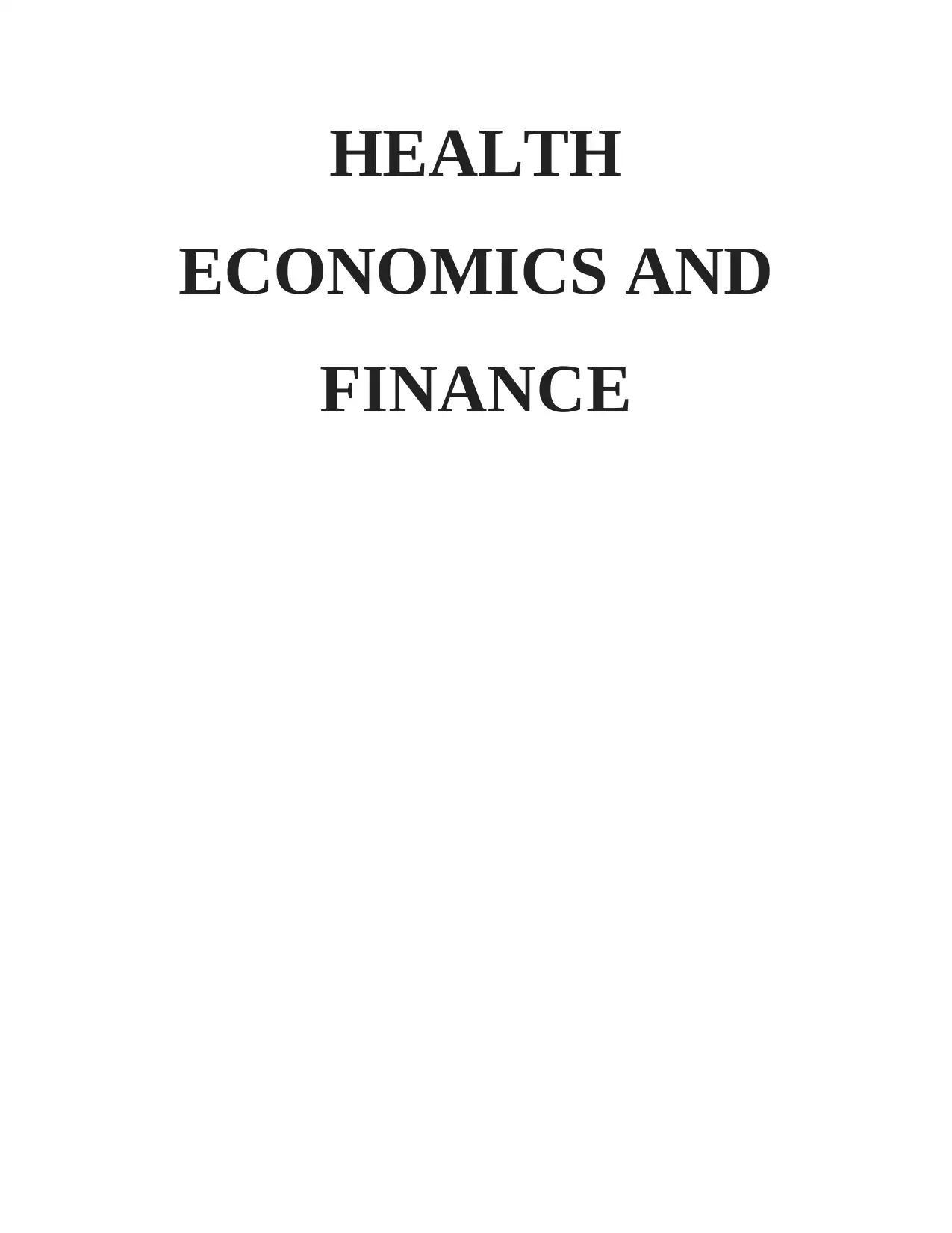
HEALTH
ECONOMICS AND
FINANCE
ECONOMICS AND
FINANCE
Paraphrase This Document
Need a fresh take? Get an instant paraphrase of this document with our AI Paraphraser
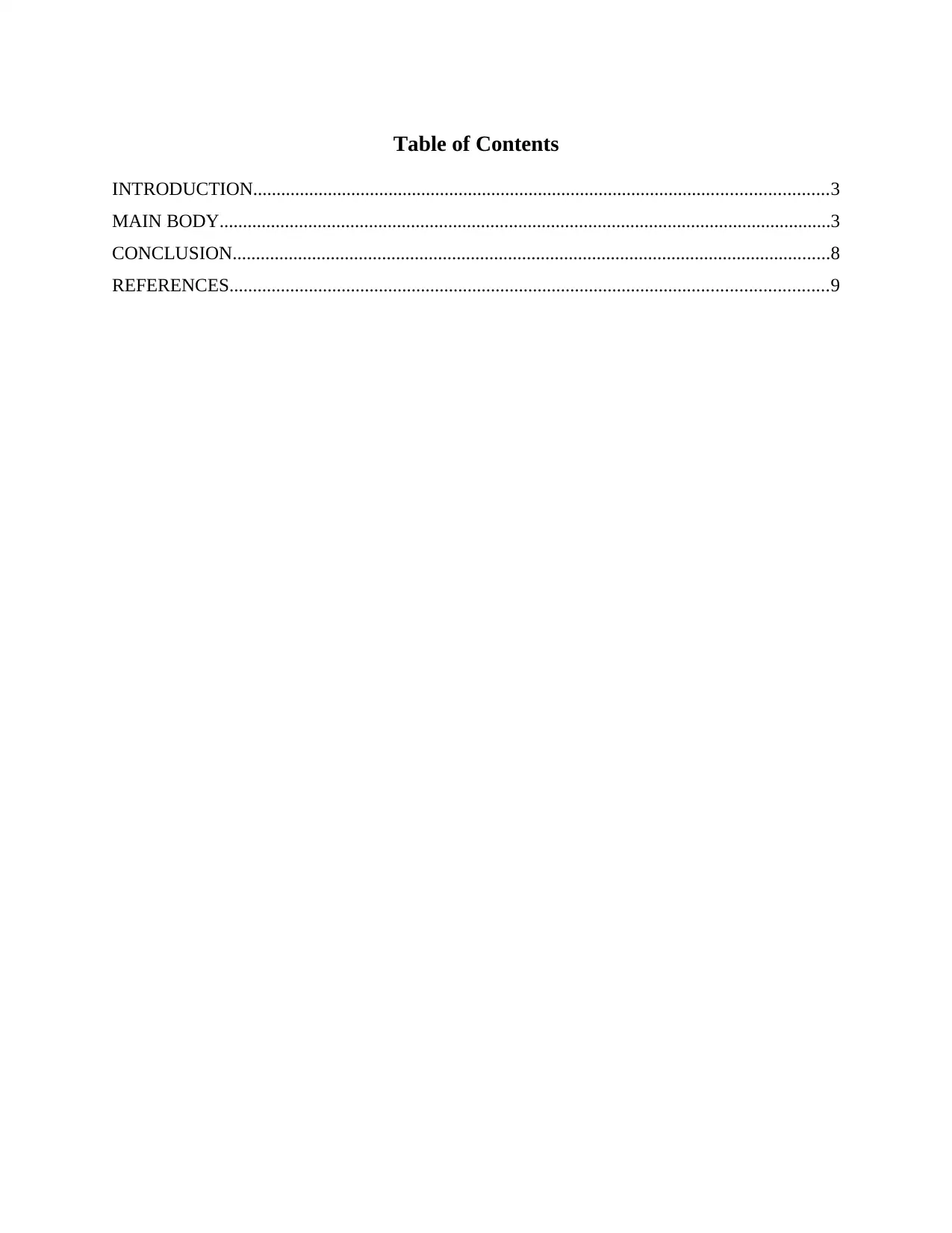
Table of Contents
INTRODUCTION...........................................................................................................................3
MAIN BODY...................................................................................................................................3
CONCLUSION................................................................................................................................8
REFERENCES................................................................................................................................9
INTRODUCTION...........................................................................................................................3
MAIN BODY...................................................................................................................................3
CONCLUSION................................................................................................................................8
REFERENCES................................................................................................................................9
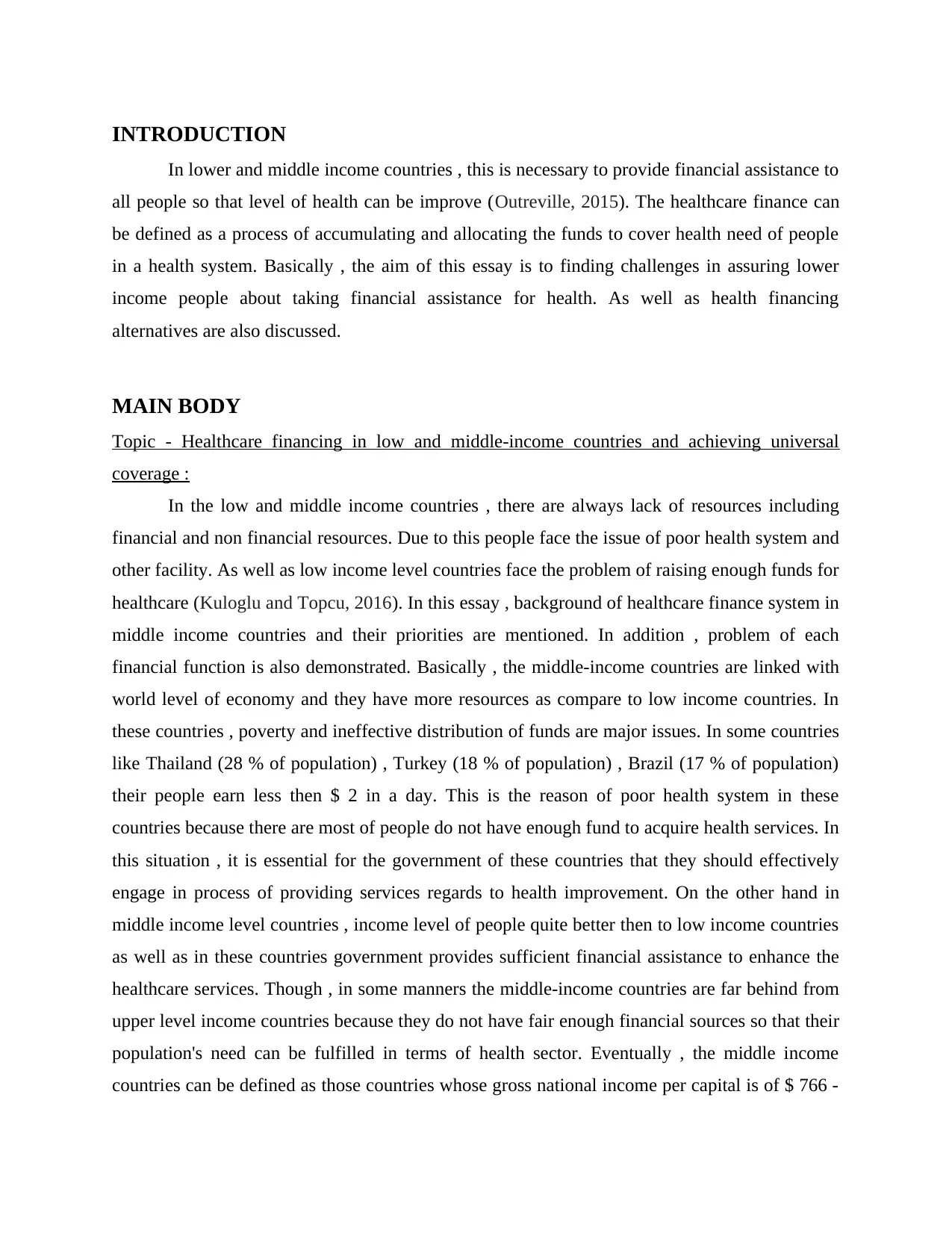
INTRODUCTION
In lower and middle income countries , this is necessary to provide financial assistance to
all people so that level of health can be improve (Outreville, 2015). The healthcare finance can
be defined as a process of accumulating and allocating the funds to cover health need of people
in a health system. Basically , the aim of this essay is to finding challenges in assuring lower
income people about taking financial assistance for health. As well as health financing
alternatives are also discussed.
MAIN BODY
Topic - Healthcare financing in low and middle-income countries and achieving universal
coverage :
In the low and middle income countries , there are always lack of resources including
financial and non financial resources. Due to this people face the issue of poor health system and
other facility. As well as low income level countries face the problem of raising enough funds for
healthcare (Kuloglu and Topcu, 2016). In this essay , background of healthcare finance system in
middle income countries and their priorities are mentioned. In addition , problem of each
financial function is also demonstrated. Basically , the middle-income countries are linked with
world level of economy and they have more resources as compare to low income countries. In
these countries , poverty and ineffective distribution of funds are major issues. In some countries
like Thailand (28 % of population) , Turkey (18 % of population) , Brazil (17 % of population)
their people earn less then $ 2 in a day. This is the reason of poor health system in these
countries because there are most of people do not have enough fund to acquire health services. In
this situation , it is essential for the government of these countries that they should effectively
engage in process of providing services regards to health improvement. On the other hand in
middle income level countries , income level of people quite better then to low income countries
as well as in these countries government provides sufficient financial assistance to enhance the
healthcare services. Though , in some manners the middle-income countries are far behind from
upper level income countries because they do not have fair enough financial sources so that their
population's need can be fulfilled in terms of health sector. Eventually , the middle income
countries can be defined as those countries whose gross national income per capital is of $ 766 -
In lower and middle income countries , this is necessary to provide financial assistance to
all people so that level of health can be improve (Outreville, 2015). The healthcare finance can
be defined as a process of accumulating and allocating the funds to cover health need of people
in a health system. Basically , the aim of this essay is to finding challenges in assuring lower
income people about taking financial assistance for health. As well as health financing
alternatives are also discussed.
MAIN BODY
Topic - Healthcare financing in low and middle-income countries and achieving universal
coverage :
In the low and middle income countries , there are always lack of resources including
financial and non financial resources. Due to this people face the issue of poor health system and
other facility. As well as low income level countries face the problem of raising enough funds for
healthcare (Kuloglu and Topcu, 2016). In this essay , background of healthcare finance system in
middle income countries and their priorities are mentioned. In addition , problem of each
financial function is also demonstrated. Basically , the middle-income countries are linked with
world level of economy and they have more resources as compare to low income countries. In
these countries , poverty and ineffective distribution of funds are major issues. In some countries
like Thailand (28 % of population) , Turkey (18 % of population) , Brazil (17 % of population)
their people earn less then $ 2 in a day. This is the reason of poor health system in these
countries because there are most of people do not have enough fund to acquire health services. In
this situation , it is essential for the government of these countries that they should effectively
engage in process of providing services regards to health improvement. On the other hand in
middle income level countries , income level of people quite better then to low income countries
as well as in these countries government provides sufficient financial assistance to enhance the
healthcare services. Though , in some manners the middle-income countries are far behind from
upper level income countries because they do not have fair enough financial sources so that their
population's need can be fulfilled in terms of health sector. Eventually , the middle income
countries can be defined as those countries whose gross national income per capital is of $ 766 -
⊘ This is a preview!⊘
Do you want full access?
Subscribe today to unlock all pages.

Trusted by 1+ million students worldwide
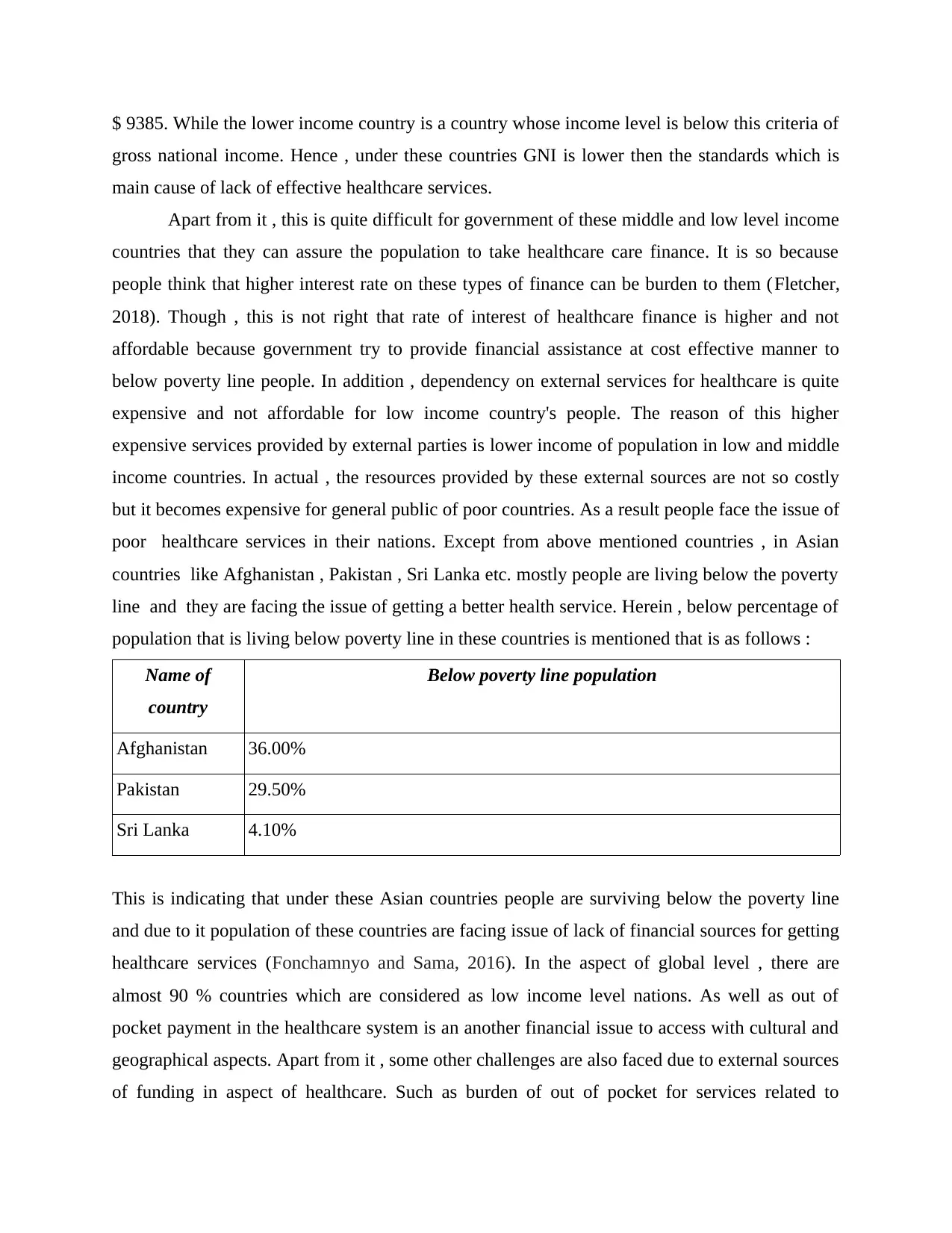
$ 9385. While the lower income country is a country whose income level is below this criteria of
gross national income. Hence , under these countries GNI is lower then the standards which is
main cause of lack of effective healthcare services.
Apart from it , this is quite difficult for government of these middle and low level income
countries that they can assure the population to take healthcare care finance. It is so because
people think that higher interest rate on these types of finance can be burden to them (Fletcher,
2018). Though , this is not right that rate of interest of healthcare finance is higher and not
affordable because government try to provide financial assistance at cost effective manner to
below poverty line people. In addition , dependency on external services for healthcare is quite
expensive and not affordable for low income country's people. The reason of this higher
expensive services provided by external parties is lower income of population in low and middle
income countries. In actual , the resources provided by these external sources are not so costly
but it becomes expensive for general public of poor countries. As a result people face the issue of
poor healthcare services in their nations. Except from above mentioned countries , in Asian
countries like Afghanistan , Pakistan , Sri Lanka etc. mostly people are living below the poverty
line and they are facing the issue of getting a better health service. Herein , below percentage of
population that is living below poverty line in these countries is mentioned that is as follows :
Name of
country
Below poverty line population
Afghanistan 36.00%
Pakistan 29.50%
Sri Lanka 4.10%
This is indicating that under these Asian countries people are surviving below the poverty line
and due to it population of these countries are facing issue of lack of financial sources for getting
healthcare services (Fonchamnyo and Sama, 2016). In the aspect of global level , there are
almost 90 % countries which are considered as low income level nations. As well as out of
pocket payment in the healthcare system is an another financial issue to access with cultural and
geographical aspects. Apart from it , some other challenges are also faced due to external sources
of funding in aspect of healthcare. Such as burden of out of pocket for services related to
gross national income. Hence , under these countries GNI is lower then the standards which is
main cause of lack of effective healthcare services.
Apart from it , this is quite difficult for government of these middle and low level income
countries that they can assure the population to take healthcare care finance. It is so because
people think that higher interest rate on these types of finance can be burden to them (Fletcher,
2018). Though , this is not right that rate of interest of healthcare finance is higher and not
affordable because government try to provide financial assistance at cost effective manner to
below poverty line people. In addition , dependency on external services for healthcare is quite
expensive and not affordable for low income country's people. The reason of this higher
expensive services provided by external parties is lower income of population in low and middle
income countries. In actual , the resources provided by these external sources are not so costly
but it becomes expensive for general public of poor countries. As a result people face the issue of
poor healthcare services in their nations. Except from above mentioned countries , in Asian
countries like Afghanistan , Pakistan , Sri Lanka etc. mostly people are living below the poverty
line and they are facing the issue of getting a better health service. Herein , below percentage of
population that is living below poverty line in these countries is mentioned that is as follows :
Name of
country
Below poverty line population
Afghanistan 36.00%
Pakistan 29.50%
Sri Lanka 4.10%
This is indicating that under these Asian countries people are surviving below the poverty line
and due to it population of these countries are facing issue of lack of financial sources for getting
healthcare services (Fonchamnyo and Sama, 2016). In the aspect of global level , there are
almost 90 % countries which are considered as low income level nations. As well as out of
pocket payment in the healthcare system is an another financial issue to access with cultural and
geographical aspects. Apart from it , some other challenges are also faced due to external sources
of funding in aspect of healthcare. Such as burden of out of pocket for services related to
Paraphrase This Document
Need a fresh take? Get an instant paraphrase of this document with our AI Paraphraser
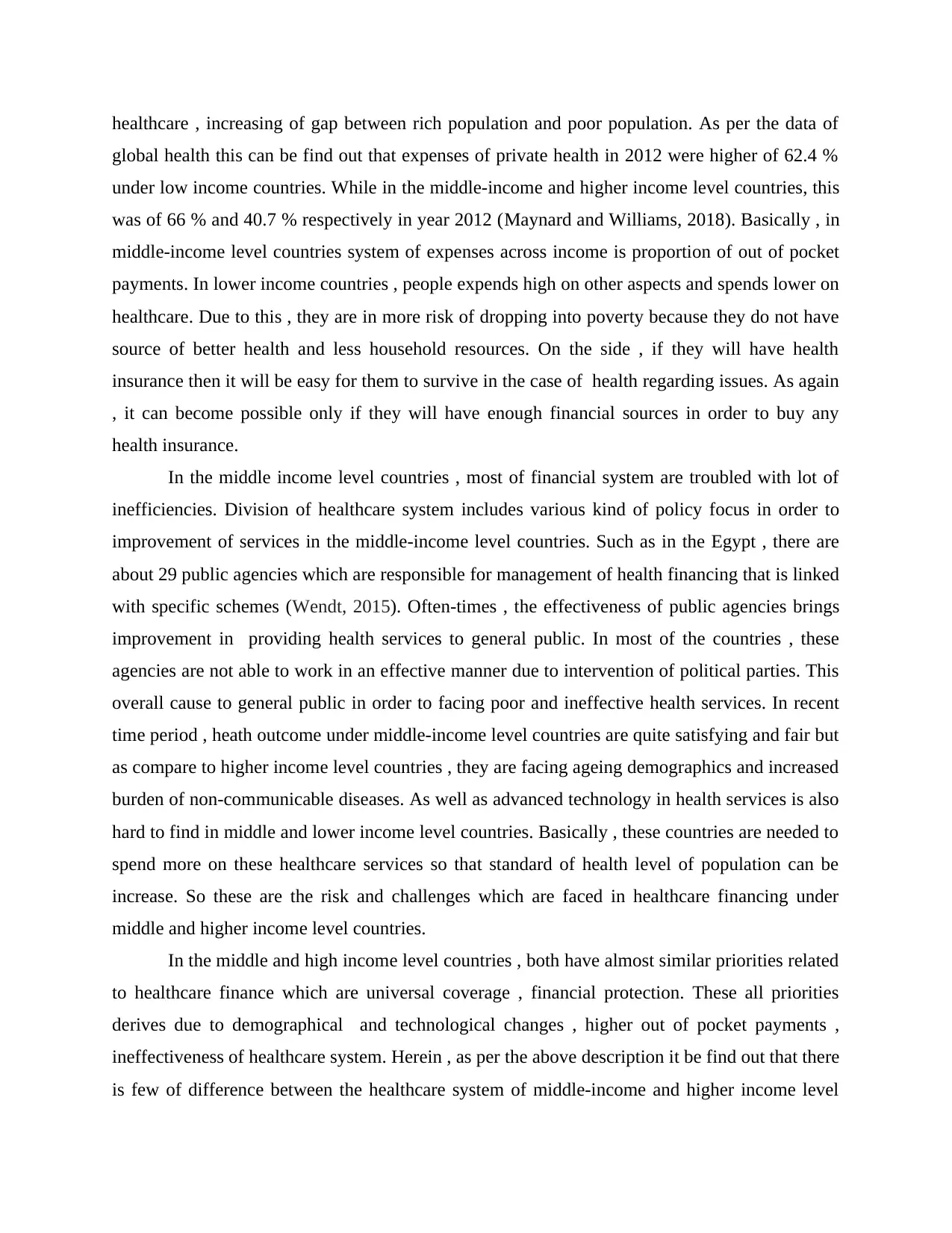
healthcare , increasing of gap between rich population and poor population. As per the data of
global health this can be find out that expenses of private health in 2012 were higher of 62.4 %
under low income countries. While in the middle-income and higher income level countries, this
was of 66 % and 40.7 % respectively in year 2012 (Maynard and Williams, 2018). Basically , in
middle-income level countries system of expenses across income is proportion of out of pocket
payments. In lower income countries , people expends high on other aspects and spends lower on
healthcare. Due to this , they are in more risk of dropping into poverty because they do not have
source of better health and less household resources. On the side , if they will have health
insurance then it will be easy for them to survive in the case of health regarding issues. As again
, it can become possible only if they will have enough financial sources in order to buy any
health insurance.
In the middle income level countries , most of financial system are troubled with lot of
inefficiencies. Division of healthcare system includes various kind of policy focus in order to
improvement of services in the middle-income level countries. Such as in the Egypt , there are
about 29 public agencies which are responsible for management of health financing that is linked
with specific schemes (Wendt, 2015). Often-times , the effectiveness of public agencies brings
improvement in providing health services to general public. In most of the countries , these
agencies are not able to work in an effective manner due to intervention of political parties. This
overall cause to general public in order to facing poor and ineffective health services. In recent
time period , heath outcome under middle-income level countries are quite satisfying and fair but
as compare to higher income level countries , they are facing ageing demographics and increased
burden of non-communicable diseases. As well as advanced technology in health services is also
hard to find in middle and lower income level countries. Basically , these countries are needed to
spend more on these healthcare services so that standard of health level of population can be
increase. So these are the risk and challenges which are faced in healthcare financing under
middle and higher income level countries.
In the middle and high income level countries , both have almost similar priorities related
to healthcare finance which are universal coverage , financial protection. These all priorities
derives due to demographical and technological changes , higher out of pocket payments ,
ineffectiveness of healthcare system. Herein , as per the above description it be find out that there
is few of difference between the healthcare system of middle-income and higher income level
global health this can be find out that expenses of private health in 2012 were higher of 62.4 %
under low income countries. While in the middle-income and higher income level countries, this
was of 66 % and 40.7 % respectively in year 2012 (Maynard and Williams, 2018). Basically , in
middle-income level countries system of expenses across income is proportion of out of pocket
payments. In lower income countries , people expends high on other aspects and spends lower on
healthcare. Due to this , they are in more risk of dropping into poverty because they do not have
source of better health and less household resources. On the side , if they will have health
insurance then it will be easy for them to survive in the case of health regarding issues. As again
, it can become possible only if they will have enough financial sources in order to buy any
health insurance.
In the middle income level countries , most of financial system are troubled with lot of
inefficiencies. Division of healthcare system includes various kind of policy focus in order to
improvement of services in the middle-income level countries. Such as in the Egypt , there are
about 29 public agencies which are responsible for management of health financing that is linked
with specific schemes (Wendt, 2015). Often-times , the effectiveness of public agencies brings
improvement in providing health services to general public. In most of the countries , these
agencies are not able to work in an effective manner due to intervention of political parties. This
overall cause to general public in order to facing poor and ineffective health services. In recent
time period , heath outcome under middle-income level countries are quite satisfying and fair but
as compare to higher income level countries , they are facing ageing demographics and increased
burden of non-communicable diseases. As well as advanced technology in health services is also
hard to find in middle and lower income level countries. Basically , these countries are needed to
spend more on these healthcare services so that standard of health level of population can be
increase. So these are the risk and challenges which are faced in healthcare financing under
middle and higher income level countries.
In the middle and high income level countries , both have almost similar priorities related
to healthcare finance which are universal coverage , financial protection. These all priorities
derives due to demographical and technological changes , higher out of pocket payments ,
ineffectiveness of healthcare system. Herein , as per the above description it be find out that there
is few of difference between the healthcare system of middle-income and higher income level
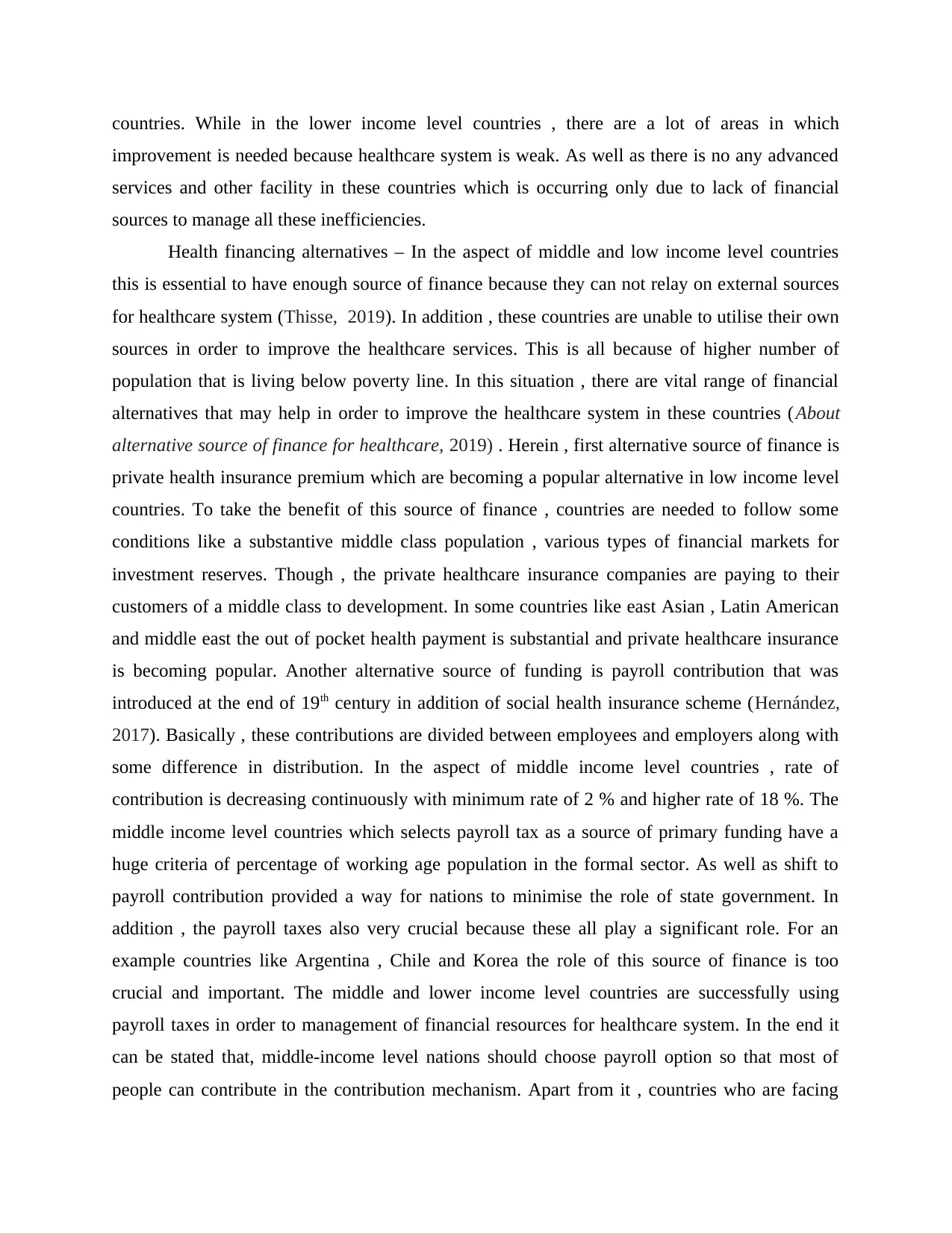
countries. While in the lower income level countries , there are a lot of areas in which
improvement is needed because healthcare system is weak. As well as there is no any advanced
services and other facility in these countries which is occurring only due to lack of financial
sources to manage all these inefficiencies.
Health financing alternatives – In the aspect of middle and low income level countries
this is essential to have enough source of finance because they can not relay on external sources
for healthcare system (Thisse, 2019). In addition , these countries are unable to utilise their own
sources in order to improve the healthcare services. This is all because of higher number of
population that is living below poverty line. In this situation , there are vital range of financial
alternatives that may help in order to improve the healthcare system in these countries (About
alternative source of finance for healthcare, 2019) . Herein , first alternative source of finance is
private health insurance premium which are becoming a popular alternative in low income level
countries. To take the benefit of this source of finance , countries are needed to follow some
conditions like a substantive middle class population , various types of financial markets for
investment reserves. Though , the private healthcare insurance companies are paying to their
customers of a middle class to development. In some countries like east Asian , Latin American
and middle east the out of pocket health payment is substantial and private healthcare insurance
is becoming popular. Another alternative source of funding is payroll contribution that was
introduced at the end of 19th century in addition of social health insurance scheme (Hernández,
2017). Basically , these contributions are divided between employees and employers along with
some difference in distribution. In the aspect of middle income level countries , rate of
contribution is decreasing continuously with minimum rate of 2 % and higher rate of 18 %. The
middle income level countries which selects payroll tax as a source of primary funding have a
huge criteria of percentage of working age population in the formal sector. As well as shift to
payroll contribution provided a way for nations to minimise the role of state government. In
addition , the payroll taxes also very crucial because these all play a significant role. For an
example countries like Argentina , Chile and Korea the role of this source of finance is too
crucial and important. The middle and lower income level countries are successfully using
payroll taxes in order to management of financial resources for healthcare system. In the end it
can be stated that, middle-income level nations should choose payroll option so that most of
people can contribute in the contribution mechanism. Apart from it , countries who are facing
improvement is needed because healthcare system is weak. As well as there is no any advanced
services and other facility in these countries which is occurring only due to lack of financial
sources to manage all these inefficiencies.
Health financing alternatives – In the aspect of middle and low income level countries
this is essential to have enough source of finance because they can not relay on external sources
for healthcare system (Thisse, 2019). In addition , these countries are unable to utilise their own
sources in order to improve the healthcare services. This is all because of higher number of
population that is living below poverty line. In this situation , there are vital range of financial
alternatives that may help in order to improve the healthcare system in these countries (About
alternative source of finance for healthcare, 2019) . Herein , first alternative source of finance is
private health insurance premium which are becoming a popular alternative in low income level
countries. To take the benefit of this source of finance , countries are needed to follow some
conditions like a substantive middle class population , various types of financial markets for
investment reserves. Though , the private healthcare insurance companies are paying to their
customers of a middle class to development. In some countries like east Asian , Latin American
and middle east the out of pocket health payment is substantial and private healthcare insurance
is becoming popular. Another alternative source of funding is payroll contribution that was
introduced at the end of 19th century in addition of social health insurance scheme (Hernández,
2017). Basically , these contributions are divided between employees and employers along with
some difference in distribution. In the aspect of middle income level countries , rate of
contribution is decreasing continuously with minimum rate of 2 % and higher rate of 18 %. The
middle income level countries which selects payroll tax as a source of primary funding have a
huge criteria of percentage of working age population in the formal sector. As well as shift to
payroll contribution provided a way for nations to minimise the role of state government. In
addition , the payroll taxes also very crucial because these all play a significant role. For an
example countries like Argentina , Chile and Korea the role of this source of finance is too
crucial and important. The middle and lower income level countries are successfully using
payroll taxes in order to management of financial resources for healthcare system. In the end it
can be stated that, middle-income level nations should choose payroll option so that most of
people can contribute in the contribution mechanism. Apart from it , countries who are facing
⊘ This is a preview!⊘
Do you want full access?
Subscribe today to unlock all pages.

Trusted by 1+ million students worldwide
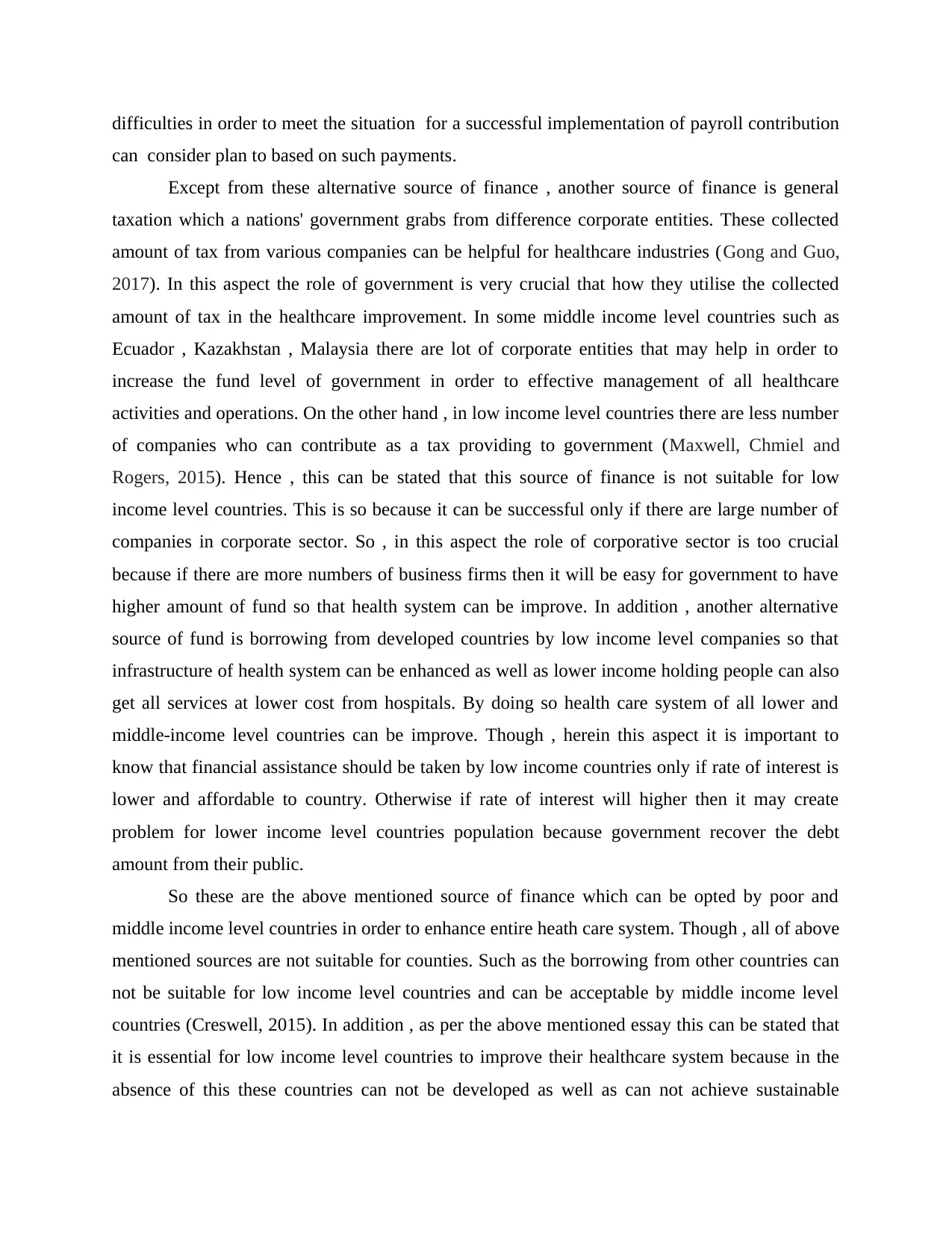
difficulties in order to meet the situation for a successful implementation of payroll contribution
can consider plan to based on such payments.
Except from these alternative source of finance , another source of finance is general
taxation which a nations' government grabs from difference corporate entities. These collected
amount of tax from various companies can be helpful for healthcare industries (Gong and Guo,
2017). In this aspect the role of government is very crucial that how they utilise the collected
amount of tax in the healthcare improvement. In some middle income level countries such as
Ecuador , Kazakhstan , Malaysia there are lot of corporate entities that may help in order to
increase the fund level of government in order to effective management of all healthcare
activities and operations. On the other hand , in low income level countries there are less number
of companies who can contribute as a tax providing to government (Maxwell, Chmiel and
Rogers, 2015). Hence , this can be stated that this source of finance is not suitable for low
income level countries. This is so because it can be successful only if there are large number of
companies in corporate sector. So , in this aspect the role of corporative sector is too crucial
because if there are more numbers of business firms then it will be easy for government to have
higher amount of fund so that health system can be improve. In addition , another alternative
source of fund is borrowing from developed countries by low income level companies so that
infrastructure of health system can be enhanced as well as lower income holding people can also
get all services at lower cost from hospitals. By doing so health care system of all lower and
middle-income level countries can be improve. Though , herein this aspect it is important to
know that financial assistance should be taken by low income countries only if rate of interest is
lower and affordable to country. Otherwise if rate of interest will higher then it may create
problem for lower income level countries population because government recover the debt
amount from their public.
So these are the above mentioned source of finance which can be opted by poor and
middle income level countries in order to enhance entire heath care system. Though , all of above
mentioned sources are not suitable for counties. Such as the borrowing from other countries can
not be suitable for low income level countries and can be acceptable by middle income level
countries (Creswell, 2015). In addition , as per the above mentioned essay this can be stated that
it is essential for low income level countries to improve their healthcare system because in the
absence of this these countries can not be developed as well as can not achieve sustainable
can consider plan to based on such payments.
Except from these alternative source of finance , another source of finance is general
taxation which a nations' government grabs from difference corporate entities. These collected
amount of tax from various companies can be helpful for healthcare industries (Gong and Guo,
2017). In this aspect the role of government is very crucial that how they utilise the collected
amount of tax in the healthcare improvement. In some middle income level countries such as
Ecuador , Kazakhstan , Malaysia there are lot of corporate entities that may help in order to
increase the fund level of government in order to effective management of all healthcare
activities and operations. On the other hand , in low income level countries there are less number
of companies who can contribute as a tax providing to government (Maxwell, Chmiel and
Rogers, 2015). Hence , this can be stated that this source of finance is not suitable for low
income level countries. This is so because it can be successful only if there are large number of
companies in corporate sector. So , in this aspect the role of corporative sector is too crucial
because if there are more numbers of business firms then it will be easy for government to have
higher amount of fund so that health system can be improve. In addition , another alternative
source of fund is borrowing from developed countries by low income level companies so that
infrastructure of health system can be enhanced as well as lower income holding people can also
get all services at lower cost from hospitals. By doing so health care system of all lower and
middle-income level countries can be improve. Though , herein this aspect it is important to
know that financial assistance should be taken by low income countries only if rate of interest is
lower and affordable to country. Otherwise if rate of interest will higher then it may create
problem for lower income level countries population because government recover the debt
amount from their public.
So these are the above mentioned source of finance which can be opted by poor and
middle income level countries in order to enhance entire heath care system. Though , all of above
mentioned sources are not suitable for counties. Such as the borrowing from other countries can
not be suitable for low income level countries and can be acceptable by middle income level
countries (Creswell, 2015). In addition , as per the above mentioned essay this can be stated that
it is essential for low income level countries to improve their healthcare system because in the
absence of this these countries can not be developed as well as can not achieve sustainable
Paraphrase This Document
Need a fresh take? Get an instant paraphrase of this document with our AI Paraphraser
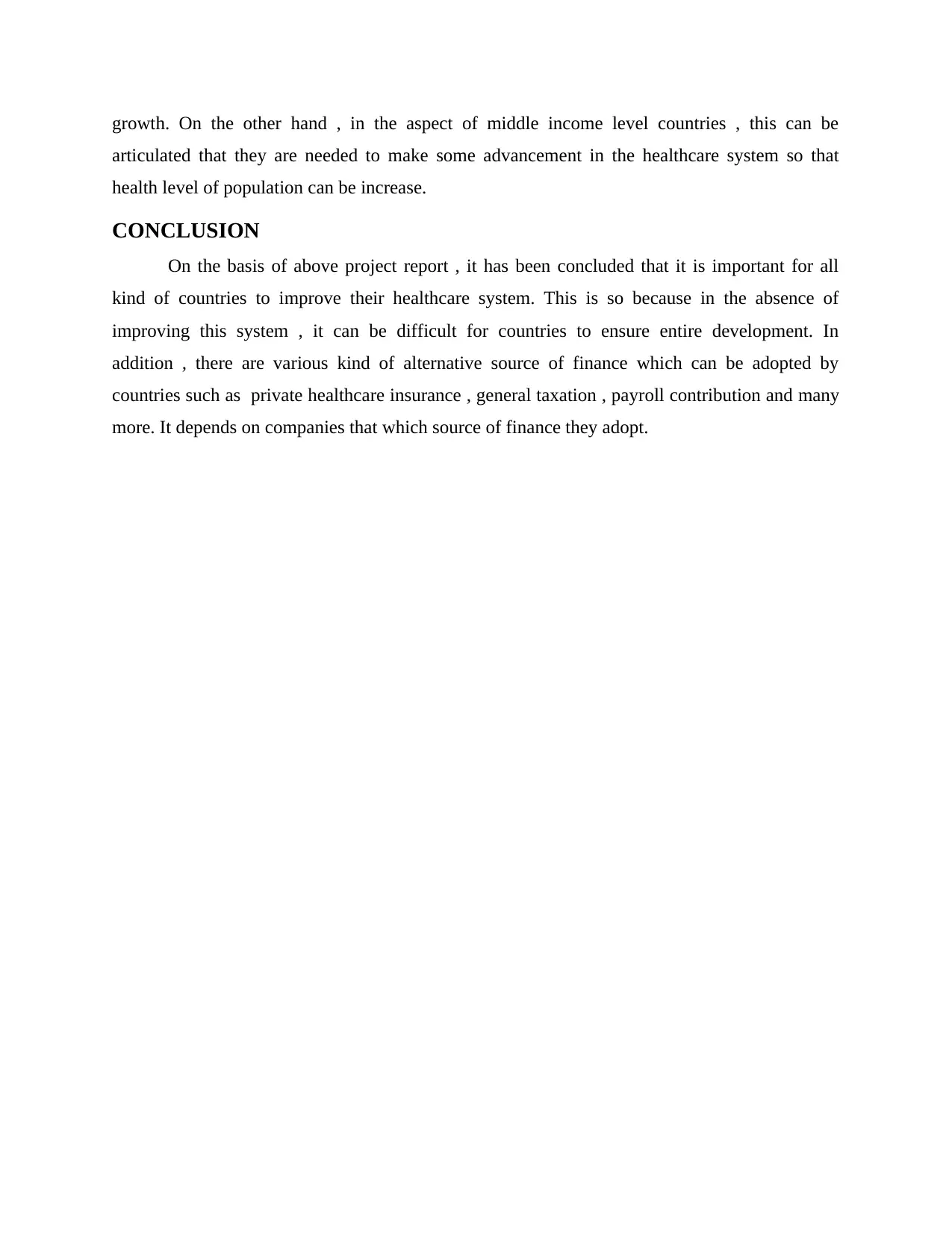
growth. On the other hand , in the aspect of middle income level countries , this can be
articulated that they are needed to make some advancement in the healthcare system so that
health level of population can be increase.
CONCLUSION
On the basis of above project report , it has been concluded that it is important for all
kind of countries to improve their healthcare system. This is so because in the absence of
improving this system , it can be difficult for countries to ensure entire development. In
addition , there are various kind of alternative source of finance which can be adopted by
countries such as private healthcare insurance , general taxation , payroll contribution and many
more. It depends on companies that which source of finance they adopt.
articulated that they are needed to make some advancement in the healthcare system so that
health level of population can be increase.
CONCLUSION
On the basis of above project report , it has been concluded that it is important for all
kind of countries to improve their healthcare system. This is so because in the absence of
improving this system , it can be difficult for countries to ensure entire development. In
addition , there are various kind of alternative source of finance which can be adopted by
countries such as private healthcare insurance , general taxation , payroll contribution and many
more. It depends on companies that which source of finance they adopt.
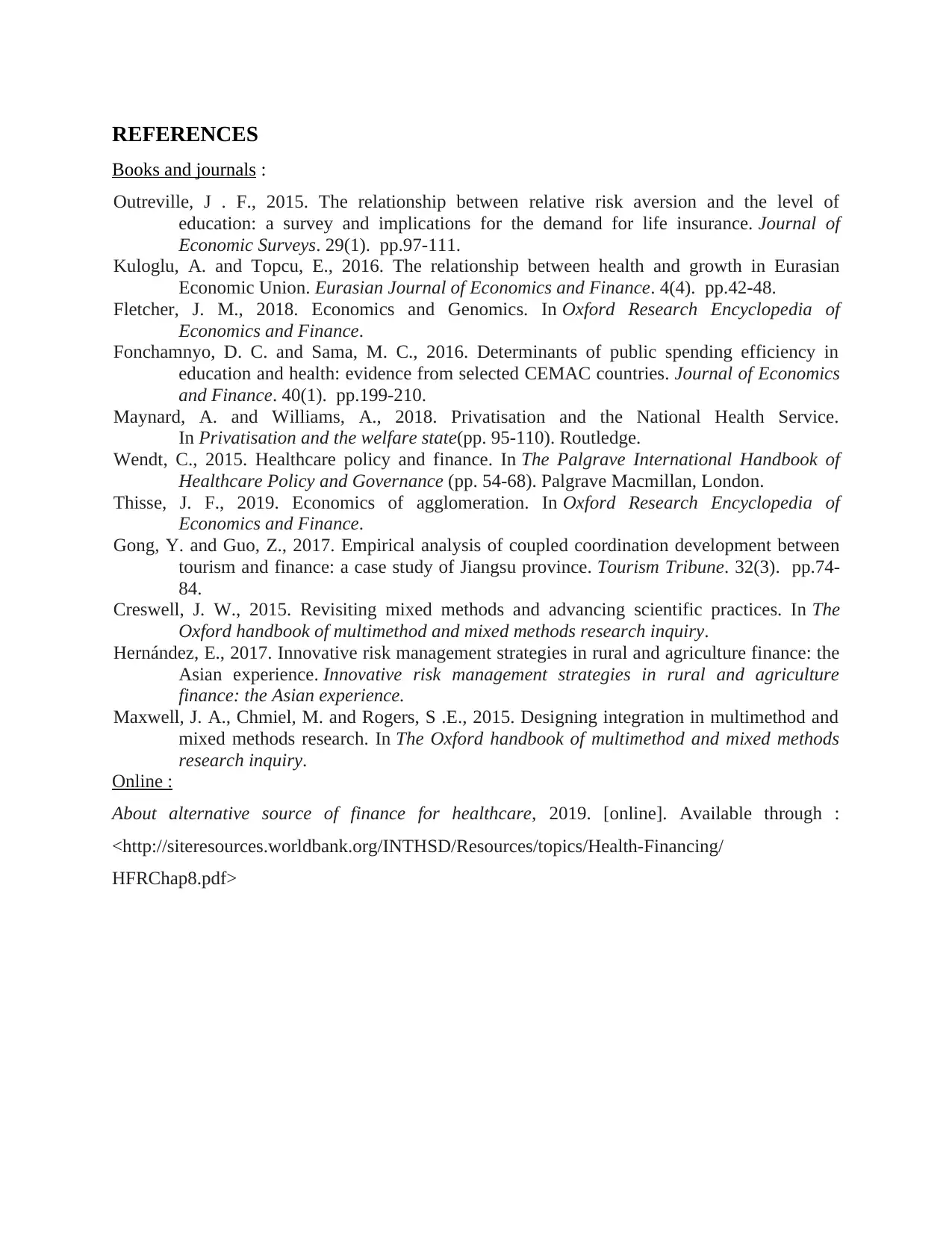
REFERENCES
Books and journals :
Outreville, J . F., 2015. The relationship between relative risk aversion and the level of
education: a survey and implications for the demand for life insurance. Journal of
Economic Surveys. 29(1). pp.97-111.
Kuloglu, A. and Topcu, E., 2016. The relationship between health and growth in Eurasian
Economic Union. Eurasian Journal of Economics and Finance. 4(4). pp.42-48.
Fletcher, J. M., 2018. Economics and Genomics. In Oxford Research Encyclopedia of
Economics and Finance.
Fonchamnyo, D. C. and Sama, M. C., 2016. Determinants of public spending efficiency in
education and health: evidence from selected CEMAC countries. Journal of Economics
and Finance. 40(1). pp.199-210.
Maynard, A. and Williams, A., 2018. Privatisation and the National Health Service.
In Privatisation and the welfare state(pp. 95-110). Routledge.
Wendt, C., 2015. Healthcare policy and finance. In The Palgrave International Handbook of
Healthcare Policy and Governance (pp. 54-68). Palgrave Macmillan, London.
Thisse, J. F., 2019. Economics of agglomeration. In Oxford Research Encyclopedia of
Economics and Finance.
Gong, Y. and Guo, Z., 2017. Empirical analysis of coupled coordination development between
tourism and finance: a case study of Jiangsu province. Tourism Tribune. 32(3). pp.74-
84.
Creswell, J. W., 2015. Revisiting mixed methods and advancing scientific practices. In The
Oxford handbook of multimethod and mixed methods research inquiry.
Hernández, E., 2017. Innovative risk management strategies in rural and agriculture finance: the
Asian experience. Innovative risk management strategies in rural and agriculture
finance: the Asian experience.
Maxwell, J. A., Chmiel, M. and Rogers, S .E., 2015. Designing integration in multimethod and
mixed methods research. In The Oxford handbook of multimethod and mixed methods
research inquiry.
Online :
About alternative source of finance for healthcare, 2019. [online]. Available through :
<http://siteresources.worldbank.org/INTHSD/Resources/topics/Health-Financing/
HFRChap8.pdf>
Books and journals :
Outreville, J . F., 2015. The relationship between relative risk aversion and the level of
education: a survey and implications for the demand for life insurance. Journal of
Economic Surveys. 29(1). pp.97-111.
Kuloglu, A. and Topcu, E., 2016. The relationship between health and growth in Eurasian
Economic Union. Eurasian Journal of Economics and Finance. 4(4). pp.42-48.
Fletcher, J. M., 2018. Economics and Genomics. In Oxford Research Encyclopedia of
Economics and Finance.
Fonchamnyo, D. C. and Sama, M. C., 2016. Determinants of public spending efficiency in
education and health: evidence from selected CEMAC countries. Journal of Economics
and Finance. 40(1). pp.199-210.
Maynard, A. and Williams, A., 2018. Privatisation and the National Health Service.
In Privatisation and the welfare state(pp. 95-110). Routledge.
Wendt, C., 2015. Healthcare policy and finance. In The Palgrave International Handbook of
Healthcare Policy and Governance (pp. 54-68). Palgrave Macmillan, London.
Thisse, J. F., 2019. Economics of agglomeration. In Oxford Research Encyclopedia of
Economics and Finance.
Gong, Y. and Guo, Z., 2017. Empirical analysis of coupled coordination development between
tourism and finance: a case study of Jiangsu province. Tourism Tribune. 32(3). pp.74-
84.
Creswell, J. W., 2015. Revisiting mixed methods and advancing scientific practices. In The
Oxford handbook of multimethod and mixed methods research inquiry.
Hernández, E., 2017. Innovative risk management strategies in rural and agriculture finance: the
Asian experience. Innovative risk management strategies in rural and agriculture
finance: the Asian experience.
Maxwell, J. A., Chmiel, M. and Rogers, S .E., 2015. Designing integration in multimethod and
mixed methods research. In The Oxford handbook of multimethod and mixed methods
research inquiry.
Online :
About alternative source of finance for healthcare, 2019. [online]. Available through :
<http://siteresources.worldbank.org/INTHSD/Resources/topics/Health-Financing/
HFRChap8.pdf>
⊘ This is a preview!⊘
Do you want full access?
Subscribe today to unlock all pages.

Trusted by 1+ million students worldwide
1 out of 9
Related Documents
Your All-in-One AI-Powered Toolkit for Academic Success.
+13062052269
info@desklib.com
Available 24*7 on WhatsApp / Email
![[object Object]](/_next/static/media/star-bottom.7253800d.svg)
Unlock your academic potential
Copyright © 2020–2025 A2Z Services. All Rights Reserved. Developed and managed by ZUCOL.





